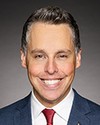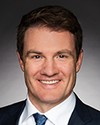Thank you.
I find it interesting that your experience with McKinsey was through a former Harper staffer, something that, I think, will shock the Conservatives on this committee.
Thank you for your testimony.
Ms. Raitt, I wanted to chat with you. It's certainly nice to see you. I'm sorry this is interrupting your vacation. I miss our time together on the finance committee.
Your opening statement was interesting, in terms of your support for P3s. I think we could debate which system is more successful or how best to deliver.... I think that's a very healthy debate we could have. In fact, that's not the position Conservative colleagues are taking. Their position is, “Let's just leave the private sector to do all of this.”
I was interested in your podcast with Ehren Cory. You spoke about the infrastructure gap and how this is a challenge all governments are dealing with. Do you think just leaving it to the private sector to build or deal with the infrastructure gap, whatever that delivery is—whether it's P3s or the Infrastructure Bank—is a realistic way to close this gap?





